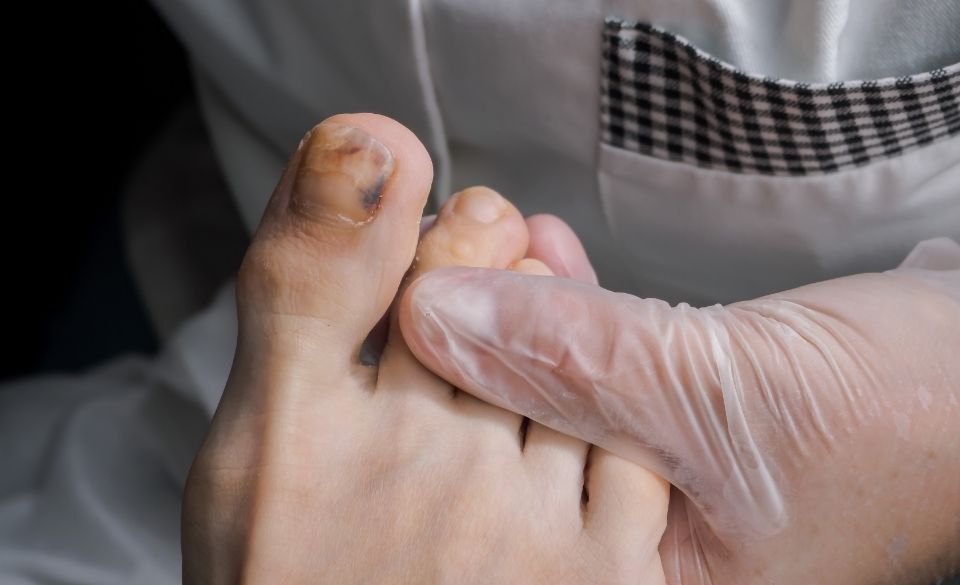
Can You Exercise With a Broken Toe? A Complete Guide
Page Contents
Runners are no strangers to dealing with injuries. However, there are times when an injury is caused by something unrelated to running or exercise. These types of unrelated injuries often happen outside of your typical training but can sometimes cause you to miss many months of exercise.
One of the most common injuries outside of running and other forms of exercise is a broken toe. A broken toe is one of the most common injuries sustained outside of exercising. So, the question begs – Can you exercise with a broken toe or not?
In this article, we discuss whether you can or should exercise with a broken toe or even run for that matter. So keep reading on to learn more about running with a broken toe.
Why Toes Are Important In Running
The foot is made up of various bones, tendons, and muscles, which are all connected through soft tissue. Out of the 26 bones that hold your foot together, 19 of these are called phalanges (toe bones and metatarsal bones). So, it is not surprising that many people end up breaking a bone in their foot.
Since your foot is the first contact point to the ground, it plays an important part in your technique (gait), propulsion, stability of the body, and general movement. So when something breaks in this part of the body it can have an impact on your running or any exercise you do.
The toe (known as the hallux) plays one of the most important parts of the foot by helping your propulsion, or commonly known as the push-off. It also plays a vital role (around 80%) in stabilizing your feet.
For many of these reasons, breaking your toe can have a big impact on your training, especially if you are wanting pain-free training.
What Is A Broken Toe?
A broken toe is when one or more of the toe bones in your feet break. This can be either be a clean break or even a stress fracture. Accidents like kicking a football, dropping a heavy object on your foot, or even stubbing your toe are the most common causes. This then typically results in either a fracture or break in the phalanges or metatarsal bones.
However, not all breaks are bad. If you are dealing with a stress fracture rather than a break, the recovery time will be much less.
A stress fracture is also a common injury in runners. However, a stress fracture is more likely to come from running than a broken toe. That is because the amount of running you do can often cause stress over time, and if you do lots of mileage or ramp up your training too quickly, you may find a stress fracture develops.
However, there is some good news. Most cases of broken toes can recover in a matter of weeks by following some simple recovery methods and rest.

Symptoms of a Broken Toe – What Are They?
If you think you have a broken toe, below can help you diagnose whether your toe is broken or not.
Symptoms can include:
– Tenderness around the toe
– Intense pain when pressure is applied
– Swelling around the affected toe
– Stiffness and discolorations
– Bruising
– Numbness
– Deformity of the toe
If you have any of the above symptoms go and see your local doctor. They can then perform an x-ray to help diagnose the injury.
Can You Exercise With A Broken Toe?
Although breaking your toes will not put you in the emergency ward, running through the pain and discomfort is never a good idea.
But the question is – Should or can you exercise with a broken toe?
Most people will find if they have broken their toe they will have trouble walking or even standing sometimes. The pain is often severe and will require a change in your technique to help offset some of the discomforts when exercising. This then can cause other issues by overloading other joints, tendons, and muscles.
However, if you insist on exercising there are a few ways you can get around the discomfort. One way is to try taping. If you have broken any of the smaller toes (middle toes), taping them can help prevent any movement and pain. However, if you have broken the big toe, taping won’t do much.
Alternatively, if you have broken your little toe (pinky toe), it is better to rest than try to tape it. Your little toe plays an important part in your training. Therefore you should take some time off and let it recover.
So, the answer to the question – can you exercise with a broken toe, no you shouldn’t!

Sprained Toe vs Broken Toe – What is The Difference?
There can be times when you may think you have a broken toe but end up only having a sprained toe. So what is the difference between a sprained to vs a broken toe? And can you exercise on a sprained toe?
The main difference between a sprained and a broken toe is one is broken and has a torn ligament. Another important difference is a broken toe will have little to no movement, a sprained toe on the other hand will have mobility, but be extremely painful.
So should you exercise with a sprained toe?
Just like exercising with a broken toe, a sprained toe can force you to change your gait. Thus placing more stress on your knees, ankles, tendons, and muscles that you are not used to.
So, either way, a sprained toe vs a broken toe doesn’t matter, both injuries will keep you out of exercising for at least some weeks.

How Long Before You Can Exercise Again?
While not the answer you are looking for, it will depend on how well you manage the injury and how early you diagnose it.
Both of these things play a part in how fast you can return to running after breaking a toe. However, most cases will take anywhere from 4-6 weeks to heal. But, it is important to wait until your x-ray and doctor have cleared you to be able to exercise again. Generally, by this time, you will be at a point where weight-bearing activity is ok and there is no pain when doing this.
However, if you still feel pain in the toe when walking or just standing, more recovery time is required to let it heal.
Conclusion
Luckily if you have broken your toe and can’t run anymore, there are some other exercises you can do. Weight training that doesn’t require any standing can replace some of your training for a while. During this time it can help you strengthen your upper body and core muscles, which you usually forget about when exercising all the time.
Other forms of exercise can include, swimming with a pool buoy, rowing, and any other exercise that doesn’t place extra stress on your toes.



